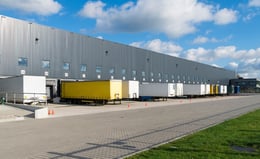Are you ready for these 2023 manufacturing trends?
Nancy Sarpolis - January 10, 2023

The new year is in full swing and so are the predictions for what manufacturing companies can expect in 2023. Here’s what industry thought leaders are saying about the biggest trends in manufacturing technology:
“2023 will be a digital manufacturing tipping point.”
“Competing in the current market demands a new approach.”
“Manufacturers (are) doubling down on existing technology initiatives to respond, adapt, and set themselves up to weather the storms coming over the horizon.”
“Unresolved issues in the supply chain will impact everyone, but none more so than the underprepared.”
The consensus: It’s going to be another unpredictable ride, but savvy organizations can harness the power of digital technologies to remain agile and succeed despite the uncertainty. Below are some strategies for using Industry 4.0 tools to drive efficiency and productivity gains in the new year.
Start your Industry 4.0 journey. Now.
In 2023, adopting digital manufacturing tools is no longer optional for companies looking to optimize production. Yet the global manufacturing industry has been slow to embrace advanced technologies. In a survey of 100 C-suite manufacturing executives, for example, 76% had not yet implemented an Industry 4.0 strategy.
As manufacturing organizations become more complex, optimizing production from a tangle of legacy systems, siloed data, spreadsheets, workers’ institutional knowledge and other factors becomes nearly impossible without digital tools. Through digitalization, manufacturers can achieve greater speed, efficiency, and accuracy. These benefits are further accelerated by advanced planning systems (APS), which help manufacturers anticipate resource needs and maximize efficient use of materials, people, and machines.
Meet supply chain disruptions head-on
The majority of surveyed executives believe the persistent shortage of critical materials and ongoing supply chain volatility will continue in the coming year. Companies well prepared for the inevitable disruptions will fare better than those who handle problems reactively. And, organizations with higher digital maturity have shown greater resilience.
Companies need the agility to respond to demanding customers and fast-changing markets. The key to achieving resiliency is digitalization, a process that entails converting the supply chain into an integrated sequence of planning and production solutions that work together. One way to achieve this is through advanced planning solutions that use interconnected modules to maximize production efficiency. A sequencing workflow, for example, combines real and forecasted production orders and creates a mid-term balanced work plan. As orders change, the new needs are compared with existing stock and re-works orders in a dynamic way, so parts shortages or disruptions can be avoided. Detailed scheduling brings together the components needed to effectively manage the flow of a product through the production facility. And, sequencing solutions take each new and existing order a manufacturer receives creates a short-term (daily or weekly) pearl chain of orders to be produced of the overall order pool. Planners can then view all production orders and their attributes, adding and removing orders due to changes in production requirements, customer demand or other factors.
Plan to succeed
To be successful in the new year, supply chains can gain agility with proactive contingency planning. Industry 4.0 solutions that test a variety of scenarios to optimize the planning, scheduling, and monitoring of the whole supply chain—from distribution to production to transportation—are becoming must-haves in the supply chain management toolkit. What-if analyses allow planners to change parameters and create different simulated scenarios. The effects of a change on production or distribution can be calculated immediately, allowing the planner to determine the best course of action for each potential scenario. Cloud-based APS solutions offer even more flexibility and accessibility across the enterprise.
Conclusion
While no one has a crystal ball to predict exactly what supply chains will face in 2023, knowing the trends can help organizations better prepare for a variety of contingencies. Having the right digital tools in place can position the organization for success despite uncertainty, while paying dividends well into the future.
If you want to learn more get your Guide to Production Planning
In this Guide you will learn:
-
How to build resilience
-
How to increase efficiency
-
How to use integrated APS planning services for production planning
-
What must-have features of an APS solution you need
-
Which KPI’s you can expect
LATEST POSTS
- Understand Circular Economy in The Manufacturing Industry
- How Can Industry 4.0 IT Integration Be Achieved Smoothly?
- The Significance of Order Sequencing in Discrete Manufacturing
- How to improve your Supply Chain Management: The Power of Control Towers
- Optimizing Human Resource Scheduling in Manufacturing: A Technological Approach



